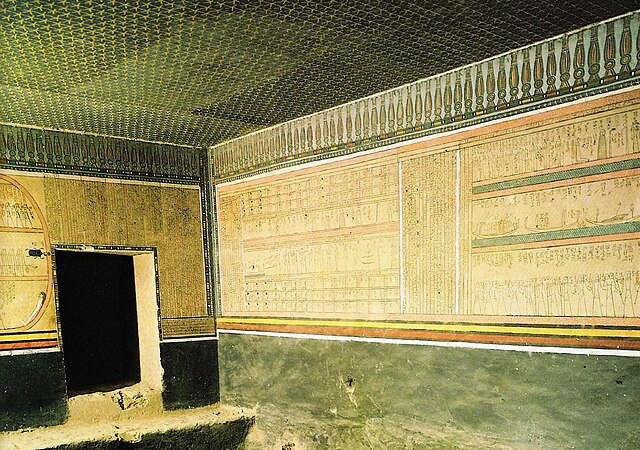The Amduat[pronunciation?] is an important ancient Egyptian funerary text of the New Kingdom of Egypt. Similar to previous funerary texts, such as the Old Kingdom's Pyramid Texts, or the First Intermediate Period's Coffin Texts, the Amduat was found carved on the internal walls of a pharaoh's tomb. Unlike other funerary texts, however, it was reserved almost exclusively for pharaohs until the Twenty-first Dynasty, or very select nobility.
Image of the Amduat from the tomb of Seti I showing the 4th hour. Note the multi-headed snake, as well as the 'zig-zag' that breaks through all 3 registers. (KV17, Tomb of Seti I, Valley of the Kings)
3D model of the tomb of Thutmose III (Valley of the Kings)
Burial chamber of KV35, the tomb of Amenhotep II, decorated with scenes from the Amduat
Partial image of the 5th hour of the Amduat depicting Osiris within the cavern (Tomb of Thutmose III, Valley of the Kings)
Khepri is a scarab-faced god in ancient Egyptian religion who represents the rising or morning sun. By extension, he can also represent creation and the renewal of life.
A pectoral with three scarab beetles attached to a necklace. The jewelry was discovered in the tomb of Tutankhamun. The scarabs, which represent Khepri, are each pushing a sun.
Painting of Khepri in QV66, the entrance to the tomb of Nefertari.
A depiction of Khepri with the upper body of a winged scarab and the lower body of a male human.
Nun, god of the waters of chaos, lifts the barque of the sun god Ra, who is represented by both the scarab and the sun disk, into the sky at the beginning of time.








